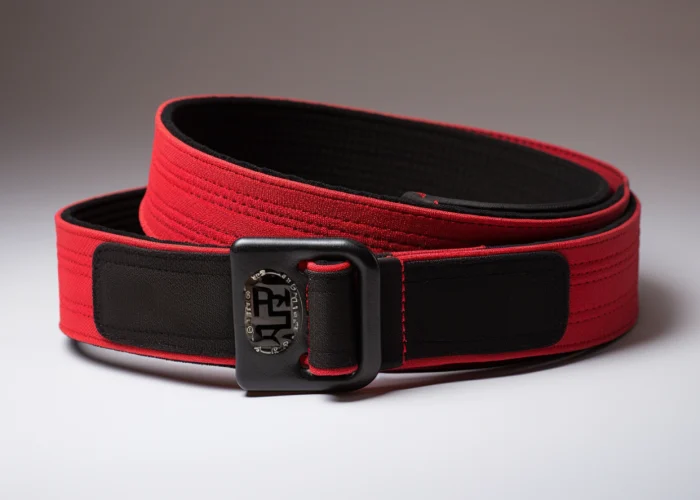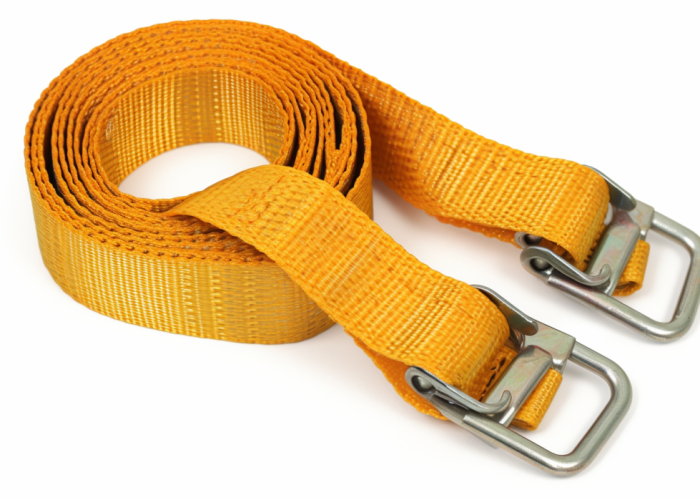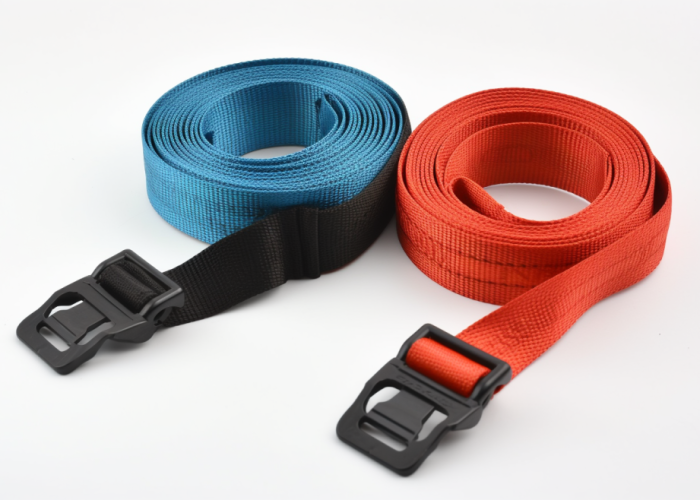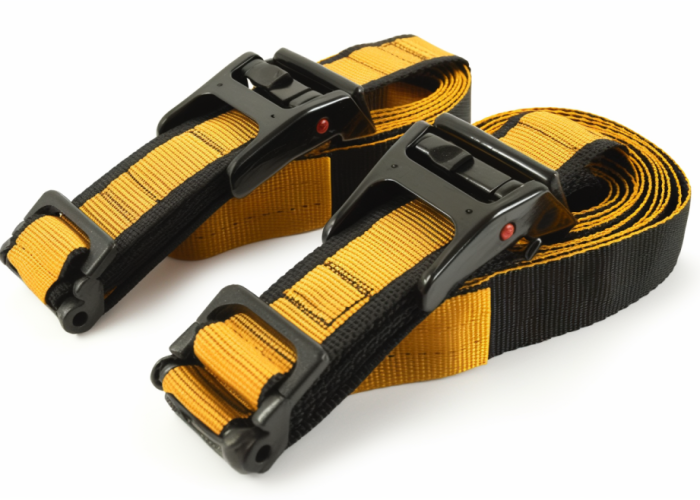Our manufacturing team has engineered heavy-duty straps for cargo securement across transportation, construction, and industrial applications for over a decade. We provide custom webbing solutions and technical consultation to help product developers optimize strap specifications for their performance requirements.
Heavy-duty straps are high-strength webbing systems used for cargo securement, with breaking strengths from 2,000 to over 15,000 lbs and working load limits based on 3:1 or 5:1 safety factors. Made from nylon or polyester and paired with robust hardware, they ensure secure,
Understanding technical specifications and material properties is essential for selecting compliant, performance-optimized straps. We’ll explore the engineering principles behind heavy-duty strap design.


Webbing manufacturing expert with 15+ years of experience helping product developers build high-performance straps for industrial, medical, and outdoor use.
Heavy-duty straps are typically made from polyester, nylon, or polypropylene. Polyester is preferred for cargo securement thanks to its high strength, low stretch, and UV resistance. Nylon offers greater elasticity and shock absorption, ideal for dynamic loads. Polypropylene is lightweight and moisture-resistant but less durable under UV and heavy stress.
Performance Comparison:
Material Comparison Table:
Material Strength UV Resistance Water Resistance Cost Best Use Case
Polyester High Excellent Excellent $$ Outdoor cargo securement
Nylon Very High Moderate Good (absorbs water) $$$ Construction, indoor lifting
Polypropylene Moderate Poor Excellent $ Indoor warehouse straps
From our manufacturing experience, transportation applications favor polyester for dimensional stability and weather resistance, while construction projects specify nylon when maximum initial strength is critical. Polypropylene works well for indoor warehouse applications where cost is prioritized, but fails prematurely in marine or outdoor environments.
Per FMCSA 49 CFR § 393.102, webbing used in cargo securement must meet minimum working load limits and elongation control under dynamic load. Polyester consistently meets these standards without additional treatments.
Design Takeaway: Choose polyester for UV-stable outdoor use, nylon for high-strength indoor tasks, and polypropylene only where cost trumps durability. Always align material choice with exposure conditions, safety margins, and regulatory compliance requirements.

Heavy-duty straps come in three primary configurations: cam buckle straps for moderate loads up to 1,500 lbs, ratchet straps for maximum tension control up to 10,000+ lbs working load, and endless loop straps for specialized lifting applications. Configuration selection depends on load requirements and tensioning method preferences.
Performance Comparison:
Transportation professionals choose ratchet straps for heavy cargo due to superior load control and DOT compliance. Construction teams favor cam buckles for quick equipment securing. Endless loops serve crane rigging where hardware elimination improves safety.
DOT regulations require specific working load limits. Ratchet straps commonly meet CVSA inspection standards when properly rated and marked.
Design Takeaway: Select ratchet straps for maximum load security and compliance, cam buckles for moderate loads requiring frequent adjustment, and endless loops for specialized lifting applications.
Breaking strength represents maximum force to destroy a strap under testing, while working load limit (WLL) is the maximum safe load for normal use, typically calculated at 1/3 of breaking strength to provide safety margins. This 3:1 ratio accounts for dynamic loading and environmental factors.
Performance Data: A 9,000 lbs breaking strength strap has a 3,000 lbs working load limit under 3:1 safety calculations. Dynamic loading during transport generates forces 2-3 times static load, making safety ratios critical for preventing failure.
Transportation regulations mandate using working load limits, never breaking strength, for cargo calculations. Professional drivers always reference WLL markings for compliance and safety—field failures occur when breaking strength is incorrectly used for load planning.
FMCSA 49 CFR § 393.102 requires WLL markings on cargo securement devices. WSTDA standards define acceptable safety ratios and testing protocols.
Design Takeaway: Always use working load limits for calculations, never breaking strength values. Ensure clear WLL labeling for regulatory compliance and consider 4:1 ratios for critical applications.

Transportation, construction, and manufacturing industries represent primary markets for heavy-duty straps, with transportation accounting for largest volume due to DOT cargo securement requirements for flatbed trucking and freight operations. Each industry has specific performance and compliance needs.
Performance Requirements:
Flatbed trucking requires DOT-compliant straps with proper edge protection. Construction sites demand abrasion-resistant materials for concrete and steel securing. Manufacturing prioritizes clean webbing that won’t contaminate products or workspaces.
Transportation must meet FMCSA 49 CFR Part 393 cargo securement rules. Construction rigging may require OSHA 29 CFR 1926.251 compliance.
Design Takeaway: Match specifications to industry needs: DOT-compliant ratchet straps for transportation, high-strength abrasion-resistant materials for construction, and clean polyester webbing for manufacturing applications.
Advanced webbing technologies provide superior strength-to-weight ratios, enhanced UV resistance, and improved abrasion resistance compared to standard webbing materials, with some high-performance options delivering up to 40% higher tensile strength while maintaining dimensional stability under dynamic loading conditions.
Key Advantages at a Glance:
High-tenacity polyester achieves 12,000+ lbs breaking strength in 2-inch widths while weighing significantly less. Solution-dyed materials maintain integrity after extended UV exposure, and advanced weaving patterns reduce stress concentration points.
Transportation companies report dramatically longer service life with high-performance webbing. Construction benefits from improved cut resistance when securing rough materials. Marine applications require solution-dyed materials for saltwater resistance.
Design Takeaway: Invest in high-tenacity polyester for maximum strength, solution-dyed webbing for outdoor use, and advanced weave patterns for improved load distribution. These upgrades reduce replacement cycles and lower total system cost over time—especially valuable in high-wear or mission-critical settings.

Heavy-duty straps must comply with DOT FMCSA regulations for cargo securement, WSTDA standards for material testing and marking, and OSHA requirements for lifting applications, with specific working load limits and safety ratios varying by intended use.
Compliance Requirements Summary:
Transportation inspections focus on WLL markings and strap condition. Construction sites require documented inspections and certifications. Non-compliance results in violations, work stoppages, and liability risks.
FMCSA 49 CFR § 393.102, WSTDA-M-1 (covers labeling, minimum breaking strength, and design criteria for web tie-down assemblies), OSHA 29 CFR 1926.251, and ASME B30.9 govern different applications.
Design Takeaway: Ensure proper WLL markings and certifications for intended use. Maintain inspection records and replace straps showing wear before compliance failure.

Selecting the right heavy-duty strap requires matching working load limits to cargo weight with appropriate safety margins, choosing materials suited to environmental conditions, and selecting hardware configurations for proper tensioning and regulatory compliance.
Selection Criteria Checklist:
Professional drivers choose 4-inch ratchets with 5,400 lbs WLL for heavy machinery. Delivery operations prefer 1-inch cam buckles for frequent handling. Construction uses abrasion-resistant materials for rough applications.
Design Takeaway: Create a selection matrix considering load requirements, environmental conditions, use frequency, and compliance needs. Not sure what load class or strap type fits your needs? Consult with our engineering team for performance-matched recommendations and proper safety margins.
Heavy-duty straps require careful material and configuration selection based on load requirements, environmental conditions, and regulatory compliance needs. Polyester webbing with appropriate hardware configurations provides optimal performance for most cargo securement applications. Our engineering team provides technical consultation for application-specific strap optimization and compliance verification.
ISO 9001 quality systems maintain incoming material inspection, in-process testing, and final product verification. All custom orders include quality documentation, test certificates, and batch traceability for quality assurance requirements and regulatory compliance.
ustom webbing MOQs typically start at 1,000-3,000 linear feet depending on material and specifications. Standard colors and widths have lower minimums. Sampling programs validate designs before full production commitments and reduce development risks.
Yes, existing designs are regularly optimized by upgrading materials, adjusting widths, or modifying hardware configurations. Engineering consultation identifies performance improvements like reducing weight, increasing strength, or enhancing durability without major design changes.
Breaking strength requirements depend on the product’s intended load and safety margins. For consumer products, specify 3-5x expected load. Industrial applications may require 10x margins. Engineering consultation helps determine optimal specifications based on use cases and target market regulations.
Different markets have varying requirements – EU CE marking, US DOT regulations, or ISO standards. Compliance documentation and testing certificates are provided for target markets. Early consultation prevents costly redesigns and ensures smooth product certification processes.
Custom development typically requires 2-3 weeks for sampling and 4-6 weeks for production after approval. Complex specifications or new tooling may extend timelines. Detailed project schedules and early engagement recommendations support product launch planning.